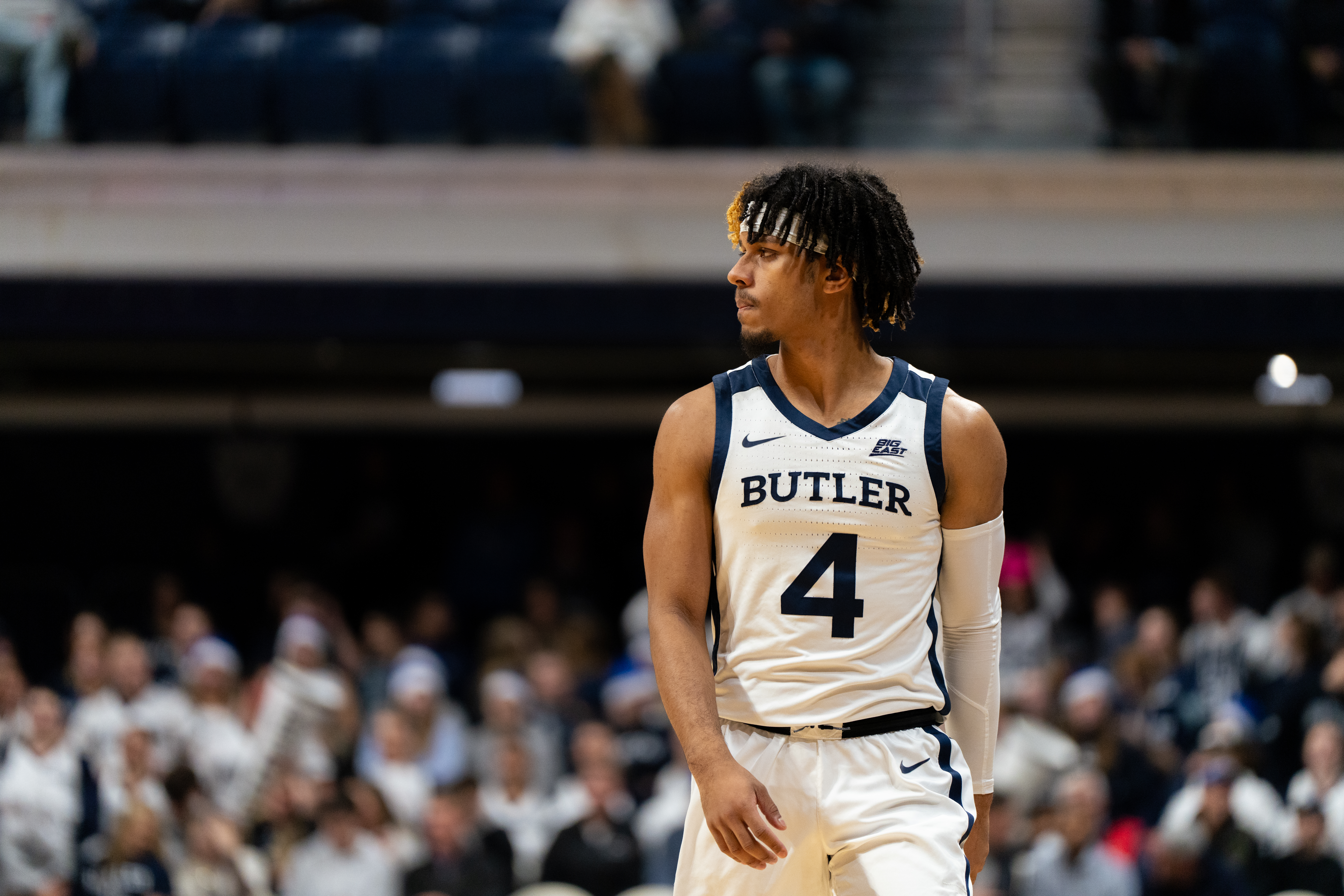Former Butler guard DJ Davis entered the transfer portal for his final year of collegiate eligibility. Photo by Andrew Buckley.
JAKE KAUFMAN | STAFF REPORTER | jfkaufman@butler.edu
Overtime, or “OT,” is an opinion column series where the Collegian takes national sports headlines or polarizing topics and gives them a Butler-centric angle.
The three weeks in late March to early April may be the best time of the year in the sports calendar. The NCAA basketball tournament — more affectionately known as March Madness — has drawn the love of the country for many different reasons. Between lesser-known teams beating some of the big names, or seeing a Cinderella story make a deep run, the tournament has a variety of draws. This widespread appeal is why 56.3 million people filled out at least one bracket in 2023.
That’s not even mentioning the benefits to the athletes themselves. For the vast majority of them, playing the game they love in front of millions will be the greatest moment of their athletic careers.
However, while all of the attention should be directed toward the teams and the players that are playing, recent trends have shifted just as much notice to the people who aren’t part of March Madness or other postseason tournaments.
The primary reason for this is that players, teams and even coaches have to spend time focusing on the transfer portal. With the NCAA loosening its guidelines on the two-time transfer rule, it is much easier to transfer than before. In fact, less than two full days after the portal opened, 555 players — or 10% of the total number of players in the league — had already entered.
In a sense, the postseason and free agency are going on at the same time, something senior sports media major Michael DeRosa finds bizarre.
“It always feels weird that the transfer portal opens so early,” DeRosa said. “It’s like you already have to be recruiting guys for next year while your season is still going on.”
Illinois men’s basketball head coach Brad Underwood echoed a sentiment similar to DeRosa’s suggestion prior to the team’s Elite Eight game versus Connecticut.
Underwood is far from the only coach whose approach has been affected by this.
While this has not been confirmed, it is a common belief that one of the main reasons St. John’s declined the National Invitation Tournament was because head coach Rick Pitino wanted to get a head start on the transfer portal. While arguments can be made that Pitino is making the smart long-term decision, there are likely players on the team — especially upperclassmen — who would have liked for their season to continue, as former Harvard basketball player and current transfer portal player Sam Silverstein discussed.
“There are seniors on the team who it was their last time playing college basketball,” Silverstein said. “At the moment, they’re pretty upset, but they would love to have the chance to play one or two more games in the [National Invitational Tournament].”
Another challenge of the transfer portal being open while the season is going on is that it opens the opportunity for players to make quick impulsive decisions. Those choices can affect them long-term, as senior strategic communication major Kyle McClintock details.
“Some of these people play their freshman year and then go,” McClintock said. “That is a 19-year-old kid making a massive decision that could not only impact the rest of his college life, but professional life.”
Discourse around the transfer portal is another substantial issue with the process. People always hear about the success stories that come with it — a player not playing much at his previous school, entering the portal and then playing a bigger role on a winning team.
However, many transfer stories do not end well. For a host of reasons, there are many instances of the grass not being greener on the other side.
That does not even take into account that a significant number of players who enter the portal do not even find a new home. Of the 1,119 players that put their name into the portal in 2023, only 532 committed to another school, making up just 48%.
This statistic is part of the reason Silverstein thinks there needs to be more information about the transfer portal provided to these athletes.
“I don’t think it is the NCAA’s responsibility, but guidance is definitely needed,” Silverstein said. “If you want to leave, go for it, but make sure you are confident in what you are doing.”
Don’t get me wrong: the transfer portal is a net positive. It is a good thing that allows student-athletes to take control and escape from less-than-ideal circumstances and for coaches to get second chances at players. However, there is no good reason that the portal opens up while the season is still going on for a third of the country.
This time of the year should not be spent worrying about whether your favorite player will transfer; it should be spent finding out which one of your friends made the best bracket.



